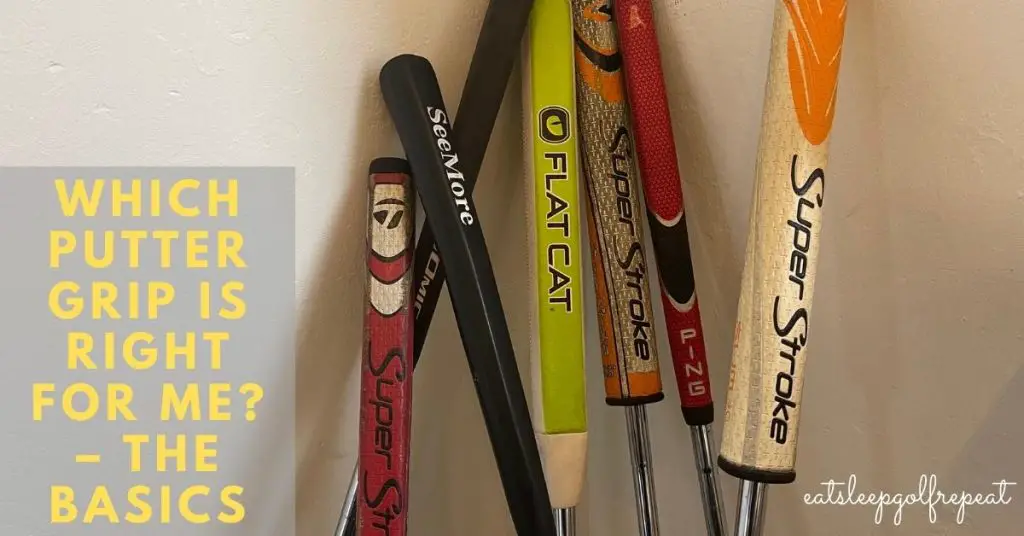
Which Putter Grip is Right For Me? – The Basics
So, you are looking into what putter grips are available on the market and which putter grip is right for me.
Well with an abundance of choice on the market I thought I would write this article explaining what I know about the various grips available and the features and benefits.
The putter grip is very important for the golfer, this is the part of the club that we all hold to make our putting stroke.
Having the correct sized putter grip can have a huge effect on your putting performance.
Having the best grip for you can help you on slow greens or fast greens, these putting grips can help golfers with they’re technical putting problems.
So, spending some time searching for the best grip for you is the right thing to do for your golf game.
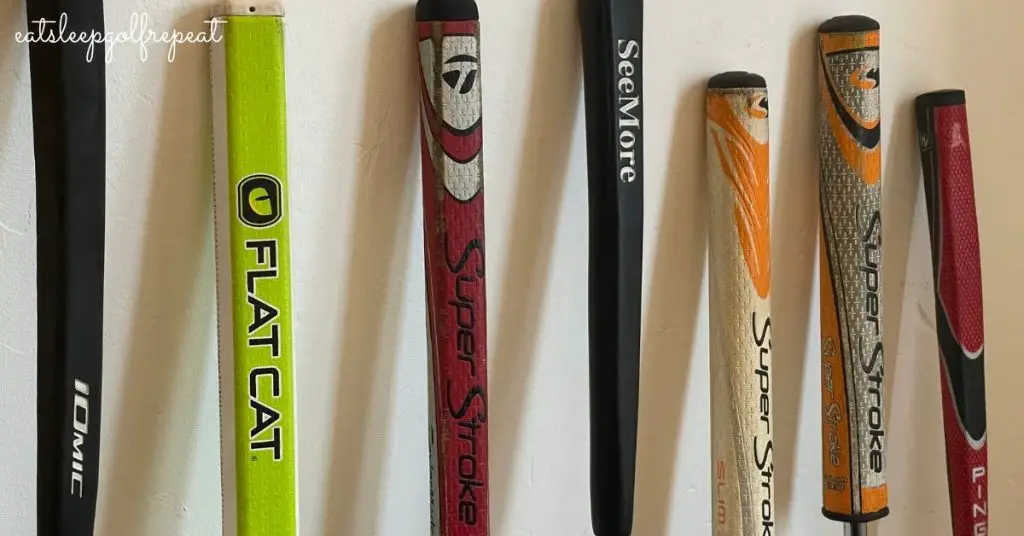
This guide will cover the most popular types of putting grips on the market, we will start by explaining the basics between the grip types for your new putter or you’re existing putter.
Then we can leap into the relevant factors that will help you make your decision about which putter grip is right for you.
Ask you can see in the image above, I have a few currently on the go !
We can give you all the relevant information to find which putter grip is right for you, and help you understand what you might want to try out.
You will need to go out to your local golf pro or golf shop and test these putter grips yourself, by either having them fitted to your putter or go to a golf retailer and try out a number of new putters.
A large golf retailer should have loads in stock to try, and you never know you might end up buying something new and shiny.
By going out and trying these thick and thin putter grips, it will give you the opportunity to try them all out, you will see how they feel in your hands, and perform when you hit some golf balls.
There are many brands out there like Superstroke, Lamkin, Fat Cat or a multitude of other putter manufacturers, who sell their own branded grips, from Scotty Cameron, Odyssey or ping to name a few.
How do you hold your putter?
Strange as it may seem, there are more ways to hold a putter than you would for your irons or driver.
Below I have listed five of the most common putting styles I have seen on the golf course.
Overlap Putting Grip
The Overlap grip or also known as the “reverse overlap” is the grip you will most likely see on the golf course, both on the professional circuit and the local member’s course.
The grip is where both hands are interlinked, the link it through the index finger of the left hand which wraps into the little finger and over the hand.
The thumb rests on the face of the putter grip and helps the golfer support the stroke.
This grip is also used while playing from tee to green, so the overlap putting grip can feel the most normal for golfers.
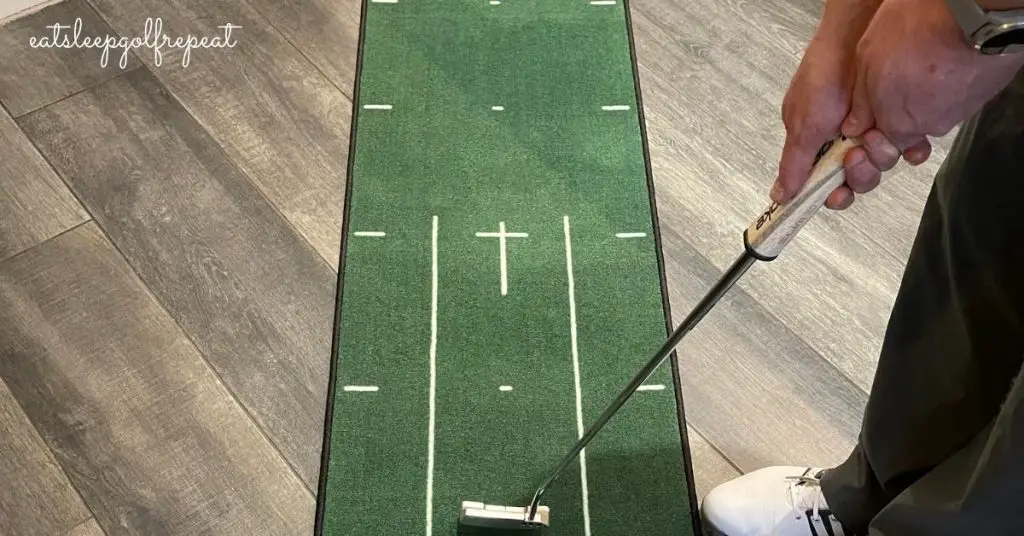
Vardon Putting Grip
The Vardon grip was named after Harry Vardon who was a very famous golfer born in 1870, he was a golfing pioneer and a lot of his golfing ideas are still being used in golf today.
Over the years I have held the putter in many ways, because I am a classic golfer always searching to be better, after holding the putter in everyday possible, I always seem to go back to the Vardon grip.
This grip is very basic, with the right little finger resting on top of the index and middle fingers.
Left Hand Below Right Hand Putting Grip
This grip is what it says really, it is just having the grip reversed, it used to also be called ‘cack-handed’.
This from experience is usually used by an experienced golfer who has been through a tough putting patch or just wants a different feeling.
This is also sometimes used with chipping.
It can be helpful if you have too much ‘hands’ in the putting stroke, and it has the benefit of keeping the putter face squarer through the putting stroke.
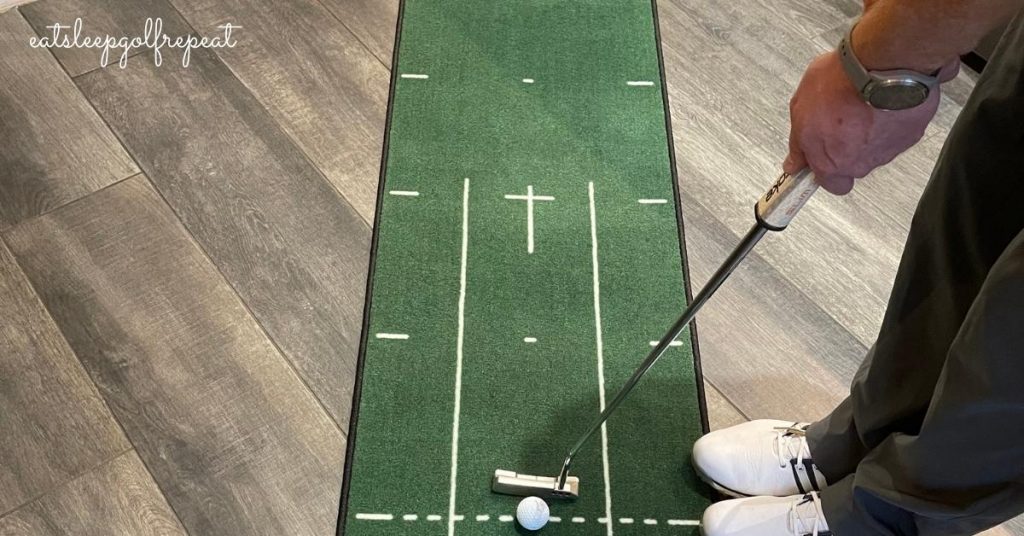
Claw Putting Grip
The Claw putting grip looks very strange.
The claw has been made famous by Justin Rose, who uses this grip for his own putting action.
Recently I have been using this method with success, it really does help with a pendulum motion, and stops the wrists from breaking.
When performing the claw, it makes the putter head stay squarer and online.
You can see how I perform the Claw below.
The claw received its name from how the right hand (for right-handed golfers) looks, and like a claw, with the thumb holding the underside of the grip.
A company called Flat Cat have released a grip especially suited to this type of putting stroke, and you can read my in-depth review, Flat Cat Putter Grip Review.
As you can see from the image I have this fitted to my Scotty Cameron Phantom X.

Prayer Putting Grip or Two Thumb Putting Grip
This grip is becoming quite popular on the professional tour with Matt Wallace currently using this to great success.
This style of putter grip helps to get the shoulders square in a solid Y shape over the ball.
It is used to try and help the golfer be more akin to a pendulum and groove a repeatable putting stroke.
This grip has both palms facing with thumbs next to each other.
If you are going to try this stroke you will definitely require a wider grip, like the 2 Thumbs or the Flat Cat.
Is a thicker putting grip or fat putter grip right for me?
The range of putter grips on the market is staggering, from the classic pistol grip to fat, square, wrist lock and claw to name a few.
The shape of these new and classic putter grips does have a huge influence in the stroke you can put onto the golf ball.
These different grip sizes will change how you hold the putter, the weight of the putter and ultimately change how hard or soft you can hit the ball.
In the past few years, the big change came when the thick putter grips emerged, I have personally had a number of these, so are they any good?
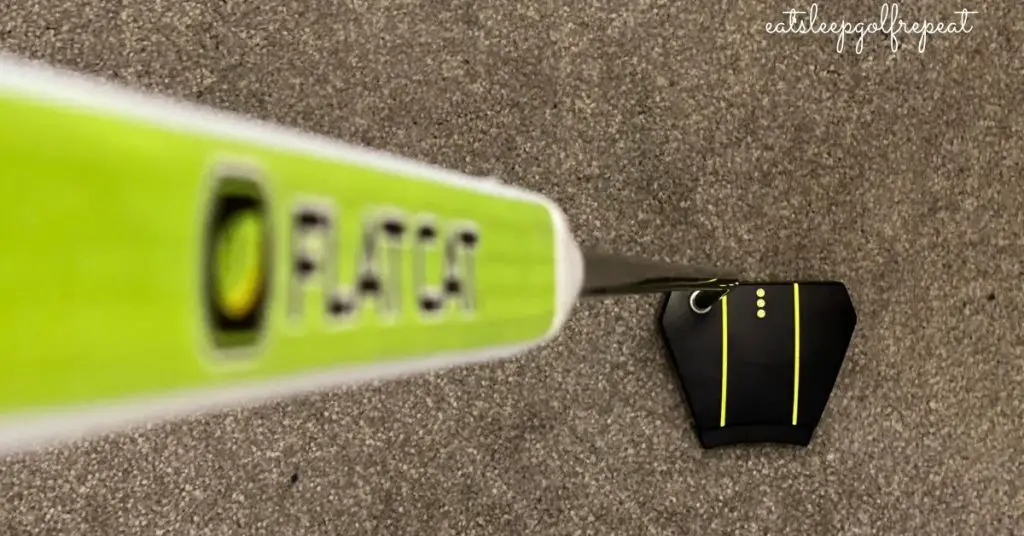
Are thick or fat putter grips better?
You will have to try them and make your own judgement for your game, I can hopefully tell you what I think, and the countless other I have played with, think of them,
How does a thicker putter grip work?
The technology behind the thicker grip is to help you gain a little extra control through the stroke, the larger grip is supposed to take the ‘handsy’ element out of the motion and help you keep the putter face squarer.
This will limit the amount of angle to apply on contact with the golf ball, which the benefit to this is greater consistency.
Getting the golf ball on the line and ultimately holing more putts.

What sizes are the thick Putter Grips?
The maximum allowed grip width is 1.75”, one of the market leaders Superstroke for putter grips have various sizes, from 1” to around 1.4”.
It might not seem a huge difference in size but they really do make a difference.
Another brand of putter grip is Flat Cat who make a wide grip, but the height is less, so it helps the golfer hold the putter in a claw style, and help you control the lead hand.
Advantages of a thick putter grip?
· Help you keep the putter head square
· Help golfers who hold the putter too tight to relax, the thicker grip helps you hold the putter looser
· Can help you perform a pendulum putting stroke
· Remove your hands and wrist hinge from the stroke
Disadvantages of a thick putter grip?
· Result in the golfer completely changing their stroke
· Weight difference in the club can make you lose pace control
· Can remove the element of feel that you can get with a pistol style putter grip
Cost of replacing a putter grip?
In comparison to the costs of new putters these days they are quite reasonable.
To replace even with the larger grip you will be looking at around £30 in the UK or $30 in the USA.
It is more expensive than replacing an iron grip, but these grips have far more material and the putter is the club you use the most in a round of golf.
How tight should you hold your putter?
How tight you hold your putter is very important for your putting stroke, the pressure you apply to the grip has a great bearing on the tempo of your stroke, how to square the putter face is.
It also can affect the pace of the putt, so you will not race the putt past or leave it short.
When you are putting it is very easy to be anxious over a putt and that creates tension and can make you squeeze the putter grip too tight which is the cause of many a poor putt.
A nice thought process to help this, if you are holding a tube of toothpaste with both hands, you want to be in control of it without squeezing any of the toothpaste out.
It might feel strange, but this will help keep you relaxed and give you more chance of making a nice measured swing.
Can you anchor your putter?
Anchoring the putter was made famous by Adam Scott and Bernard Langer.
This was quite a popular putting stroke by in which golfers would press or “ anchor” the top of the putter grip into either the chest using a Broom handle putter into the gut or Belly putter.
The reason the players used this method was to try and create a stroke that was more repeatable or consistent.
This method of anchoring the putter has been banned, which prohibits a golfer from anchoring the club using an anchor point.
Can you still use a broom handle or belly putter?
Yes, you can, there is no problem in using these types of putters, you just are not able to anchor the top of the putter into your body. The new ruling is 14-1b.
See the below video which might help explain in more depth.
Conclusion
You can see from the information above, there is lots of putter grips and ways and methods to hold the putter.
Having a putter grip that’s suits you can make such a difference to both how you square your putter and getting the golf ball online.
If you get a new putter grip that suits your game, it can be wise to practice at home. If you need a good home practice set up, have a look at the putting mats and gates at Putt Out. You can read our article here. Is the Putt Out Pressure Putt Trainer, Mirror, Gate, and putting mat, any good?

